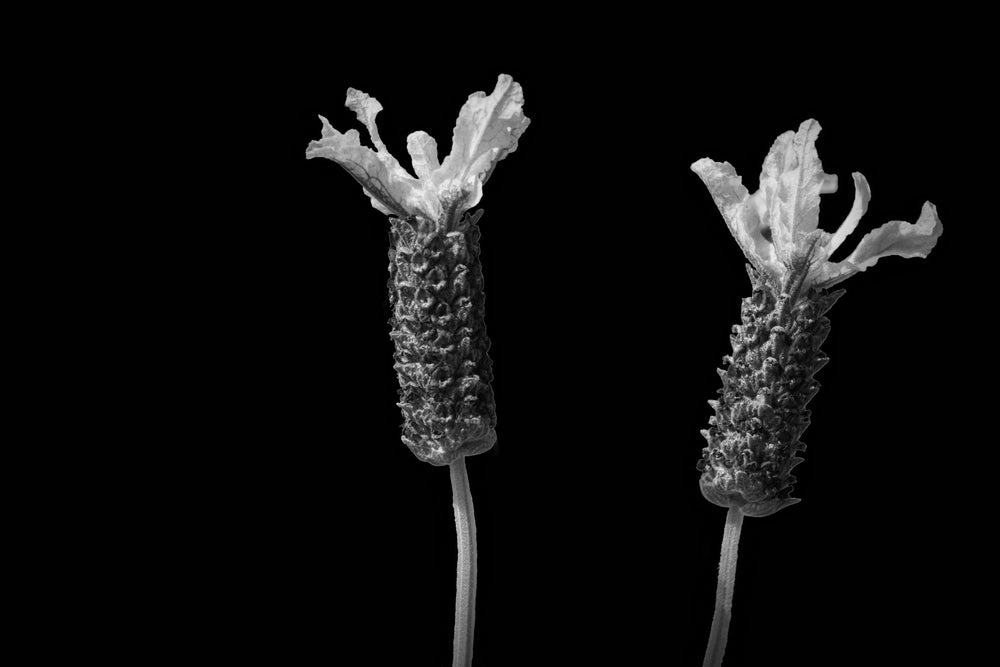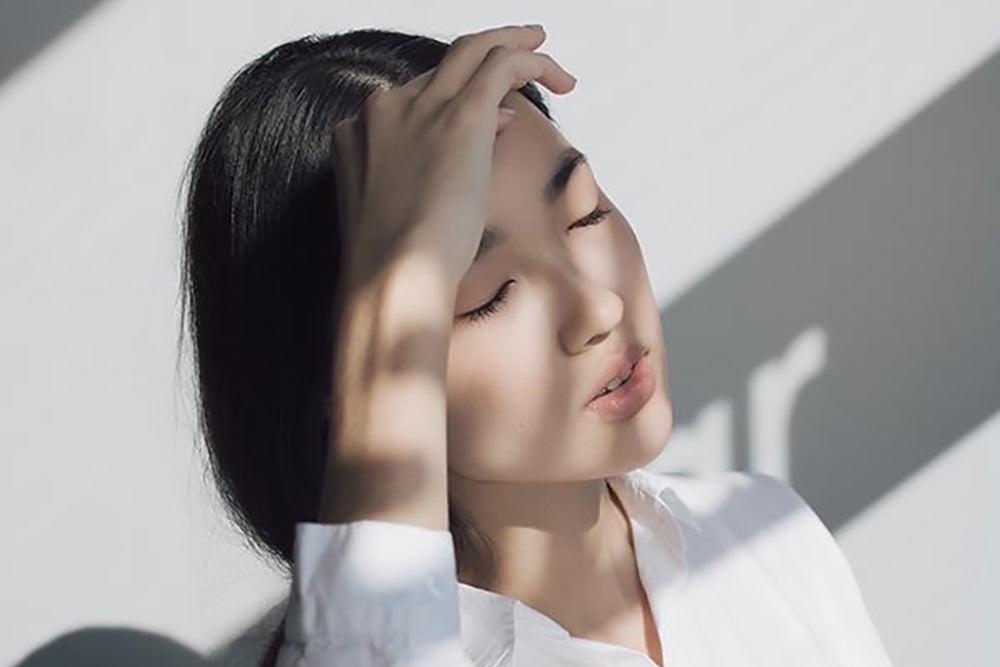
ingredient focus: lavender

the bottom line
lavender is a violet-blue flower with one of the most recognized scents in the world. but behind that calming fragrance, lavender hosts a number of phytochemicals that provide it with significant analgesic, anti-inflammatory, antioxidant, and anti-bacterial properties. keep reading to learn more about this brainy beauty.
first layer: the history of lavender
The use of lavender in medicine can be traced back to the first century AD when Greek botanist and physician Dioscorides reported its use in the treatment of headaches and indigestion. Ancient Romans used lavender as an antiseptic, while it was used as an aphrodisiac in the Middle Ages. In Eastern medicine, lavender has been used to treat anxiety.
Lavender was first used in wound healing in 1910 when French chemist René-Maurice Gattefossé sustained serious burns to his hands and face following a laboratory accident. He applied lavender oil to his gangrenous wounds and noted rapid healing within several days. Military physicians subsequently used lavender oil to disinfect and treat wounds during World War I.
There are 39 species of lavender, most of which have their origins in the Mediterranean, particularly France, Italy, and Spain. All lavenders belong to the plant family Lamiaceae. The three most valuable species are lavender (Lavandula angustifolia), lavandin (Lavandula intermedia), and spike lavender (Lavandula spica). Lavender essential oil is obtained by the steam distillation of lavender flowers and is prized for its calming aroma.
second layer: the science of lavender
Approximately 100 different phytochemicals* have been identified within lavender oil, including linalyl acetate (30-55%), linalool (20-35%), tannins (5-10%), caryophyllene (8%), esters, camphor, and limonene. The relative amounts of these compounds will vary among the specific lavender species, as well as according to conditions including latitude, altitude, temperature, and rainfall. Linalyl acetate is the most important component which determines the quality of the lavender oil. Lavender’s biological activities, which include antioxidant*, anti-inflammatory, analgesic*, antibacterial, antiviral, and antifungal properties, have been attributed to the components linalool, cineol, and linalyl acetate.
Linalool is a naturally occurring constituent in many essential oils. It has both anti-inflammatory and analgesic properties. The concentration of linalool in particular has been found to vary significantly based upon the environmental conditions at the time of harvest. Linalyl acetate acts as an anti-inflammatory, and with linalool helps to reduce skin irritation, inflammation, and free radicals. Spike lavender in particular has higher levels of camphor, and therefore is associated with more potential for skin irritation.
A review of 36 studies showed that the use of lavender oil was associated with more rapid wound healing secondary to increased collagen expression and enhanced activity of proteins associated with wound remodeling. One randomized, controlled trial evaluated the use of lavender oil in the treatment of oral mucosal wounds. Patients treated with 2% lavender oil experienced complete healing within 4 days as compared to the control group which had persistent wounds at day 6. Treatment with lavender oil also significantly reduced redness within 2.3 days compared to 10.5 days in the non-treated group.
Another study evaluated the use of lavender oil for the treatment of gynecologic wounds following episiotomy*. A randomized, controlled trial demonstrated that treatment with lavender oil significantly reduced redness although it did not appear to affect pain. Three subsequent studies on post-episiotomy patients confirmed significant reductions in not only redness but also swelling, pain, discharge, and healing time.
In vitro studies of lavender essential oil support these findings. In one study lavender oil was found to significantly increase levels of transforming growth factor (TGF) beta and type I collagen*. TGF-beta induces the proliferation of fibroblasts* and their subsequent differentiation into myofibroblasts* which help wounds to contract. Another study demonstrated that fibroblast growth factor 2 (FGF-2; induces the proliferation of fibroblasts) and epidermal growth factor (EGF; signals wound contraction and epithelialization) levels were elevated in wounds treated with lavender oil. Lavender essential oil has also been shown to inhibit plasminogen activator inhibitor (PAI) 1, which leads to more rapid fibrin* degradation, thereby avoiding excessive scar formation.
third layer: lavender and skin care
Lavender oil has a number of uses in care of both the skin and hair:
-
antimicrobial: Lavender essential oil has been shown to be effective against both fungus and bacteria, including Candida albicans, Staphylococcus aureus, Pseudomonas aeruginosa, and Aspergillus brasiliensis.
-
anti-acne: the anti-inflammatory and anti-bacterial activity of lavender is very helpful in the treatment of acne.
- anti-aging: as an antioxidant, lavender oil helps to protect the skin against environmental stressors and the development of fine lines and wrinkles.
- skin soothing: as a result of its anti-inflammatory activity, lavender oil can be very soothing by decreasing pain and itching.
- wound care: lavender oil may speed the healing of burns, cuts, scrapes, and wounds, as well as decreasing scarring.
- hair growth: While there is limited data, lavender oil has been incorporated into hair products to help increase hair growth.
fourth layer: how we do it
we use lavender oil for both its scent and healing properties in our award-winning rosehip replenishing balm. created especially for Dr. Naidu's patients who required a gentle yet effective ointment for their incisions following surgery, this glossy body balm boasts a mélange of mango butter and highly soothing botanical oils including rosehip, sea buckthorn, arnica, argan, gotu kola, lavender, and lemon.
renew, replenish, radiate; repeat.
All this and more at www.anokhaskincare.com .
xx
anokha
references:
- https://www.formulabotanica.com
- Samuelson R, Lobl M, Higgins S, Clarey D, Wysong A. The effects of lavender essential oil on wound healing: a review of the current evidence. J Altern Comp Med 2020; 26(8): 680-690.
- Altaei DT. Topical lavender oil for the treatment of recurrent aphthous ulceration. Am J Dent 2012; 25910: 39-43.
- Vakilian K, Atarha M, Bekhradi R, Chaman R. Healing advantages of lavender essential oil during episiotomy recovery; a clinical trial. Complement Ther Clin Pract 2011; 17: 50-53.
- Silva GL Luft C, Lunardelli A et al. Antioxidant, analgesic and anti-inflammatory effects of lavender essential oil. An Acad Bras Cienc 2015; 87: 1397-1408.
- Ben Djemaa FG, Bellassoued K, Zouari S et al. Antioxidant and wound healing activity of Lavandula aspic L. ointment. J Tissue Viability 2016; 25: 193-200.
- Turgut AC, Emen FM, Canbay HS, et al. Chemical characterization of Lavandula angustifolia as a phytocosmetic species and investigation of its antimicrobial effect in cosmetic products. J Turk Chem Soc 2017; 4(1): 283-298.
- https://www.fondation-gattefosse.org/en/rene-maurice-gattefosse/
- https://en.wikipedia.org/wiki/Lavandula
*definitions:
analgesic: a substance that relieves pain
antioxidant: an antioxidant is a compound that inhibits oxidation. free radicals create oxidative stress and an inflammatory response which in turn can damage DNA and result in injury to the epidermal and dermal layers of the skin. in the skin, this manifests as premature aging with decreased elasticity leading to increased wrinkling, age spots, and decreased skin tone. antioxidants stabilize free radicals, which in turn limits their ability to damage the body.
collagen: a fibrous protein that forms part of the dermal matrix, connective tissue, cartilage, and bone
episiotomy: a surgical cut made at the opening of the vagina during childbirth, to aid delivery and prevent tissue rupture
fibrin: a protein formed during blood clotting, it forms a fibrous mesh which impeded blood flow
fibroblasts: a fibroblast is a cell that contributes to the formation of connective tissue within the body. fibroblasts secrete collagen proteins which help to maintain the structural framework of the tissues.
myofibroblasts: myofibroblasts are a differentiated cell type essential for wound healing which participates in tissue remodeling following injury.
phytochemicals: chemical compounds produced by plants, usually to help them resist fungi, bacteria, and viral infections, and consumption by insects and animals. phytochemicals can be classified into the major categories of carotenoids and polyphenols. Polyphenols include phenolic acids, flavonoids, stilbenes, and lignans. Flavonoids can be further divided into groups based upon their chemical structure, including anthocyanins, flavones, flavanones, isoflavones, and flavanols. Finally, flavanols are classified as catechins, epicatechins, and proanthocyanidins. 50,000-130,000 phytochemicals have been identified.
faq’s:
what is lavender?
lavender is a violet-blue flower recognized both for its calming scent as well as its significant analgesic, anti-inflammatory, antioxidant, and anti-bacterial properties.
what are some lavender oil benefits?
lavender has been shown to decrease pain and inflammation; to assist in wound healing; and to help stimulate hair growth.
can I use lavender oil for hair?
lavender oil has been incorporated into hair products to help increase hair growth.
can you describe how to extract lavender oil?
lavender essential oil is obtained by the steam distillation of lavender flowers which are typically harvested by hand.
how to use lavender essential oil?
lavender essential oil should be used within a carrier oil as direct application may result in skin irritation and allergic reactions.



Laisser un commentaire
Ce site est protégé par hCaptcha, et la Politique de confidentialité et les Conditions de service de hCaptcha s’appliquent.